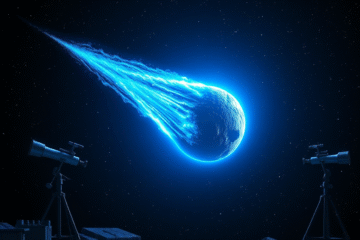Starship Rocket Performs Important Test Flight
The Test Flight of the Starship rocket scheduled for October 13, 2025, represents a significant milestone in the evolution of space exploration.
Scheduled for launch from Starbase in Texas, this test focuses on collecting essential data to improve the next-generation Super Heavy thruster and perform stress tests on the Starship's heat shield.
The new engine burn configuration during landing, which will not include an attempted return to the launch site, promises to provide valuable insights into vehicle performance under challenging conditions.
Starship 11th Test Flight Overview
The Starship launch will occur in October 13, 2025, at 8:15 PM, at Starbase, Texas, a significant milestone in the technological evolution of space exploration.
This test flight marks the eleventh of SpaceX's program and is highly anticipated due to its crucial role in validating and advancing the design of the reusable launch vehicle.
Composed of Super Heavy thruster and by Starship, the entire system aims to collect vital data on the next generation of thrusters, as well as perform stress tests on the heat shields, crucial elements for safe missions.
This innovation not only optimizes costs, making space exploration more accessible, but also exponentially increases interplanetary transportation capabilities, enhancing missions to the Moon and Mars.
SpaceX, by implementing a new engine burn configuration during landing, demonstrates its continued dedication to innovation and safety, essential for the success of future crewed missions.
For those interested in exploring more about this innovative project, the SpaceX provides comprehensive details about your missions and advancements.
This illustrates the company's ambition to redefine the limits of what is possible in space exploration.
Vehicle Components and Test Objectives
The components of the Starship vehicle play a key role in the success of the 11th test flight, which aims to advance the development of the next generation of thrusters and ensure the resilience of the spacecraft's heat shield.
With releases starting from Starbase, Texas, the mission seeks to optimize performance in different scenarios, including new engine burn configurations for landing.
Super Heavy is the component responsible for driving the Starship spacecraft to orbit, while the spacecraft itself is responsible for maneuvering in space and withstanding the extreme heat upon re-entering the atmosphere.
The objectives include not only evaluating the efficiency of the new thrusters, but also stress testing an innovative heat shield that will be crucial for future safe return missions to Earth.
| Component | Function |
|---|---|
| Super Heavy | Boosts the spacecraft into orbit |
| Starship | Performs space maneuvers and resists reentry |
Relevant, each element of the system has a well-defined role, contributing to the validation of a series of high-impact scientific and technological objectives.
Landing Configuration and Differences from the Previous Flight
The landing configuration for Starship's 11th flight stands out for its new engine burnout during the descent, a significant change from previous flights.
In this test, which does not involve returning to the original launch site, SpaceX is focusing on engine performance during the landing process.
This strategy aims to further refine maneuvering capabilities of the Super Heavy for future missions.
Unlike past approaches, the new configuration seeks to optimize efficiency and ensure smoother operation upon entry into the atmosphere.
The changes are designed to reduce fuel consumption, a crucial point for the success of longer, more complex missions.
- Single burn in the final phase
- Drastic reduction in fuel consumption
- Improvement of landing maneuvers
On the flight carried out on August 26, the focus was on second stage performance, emphasizing the importance of each phase of the flight to the overall success of the mission.
While the previous test focused on evaluating critical functions during stage separation, the current flight encompasses a new dimension of the landing process, essential for large-scale rocket reusability.
For more details, check out the article on Power 360.
In conclusion, the 11th Starship Test Flight will not only allow SpaceX to advance its technologies, but will also pave the way for future developments in space exploration.



0 Comments